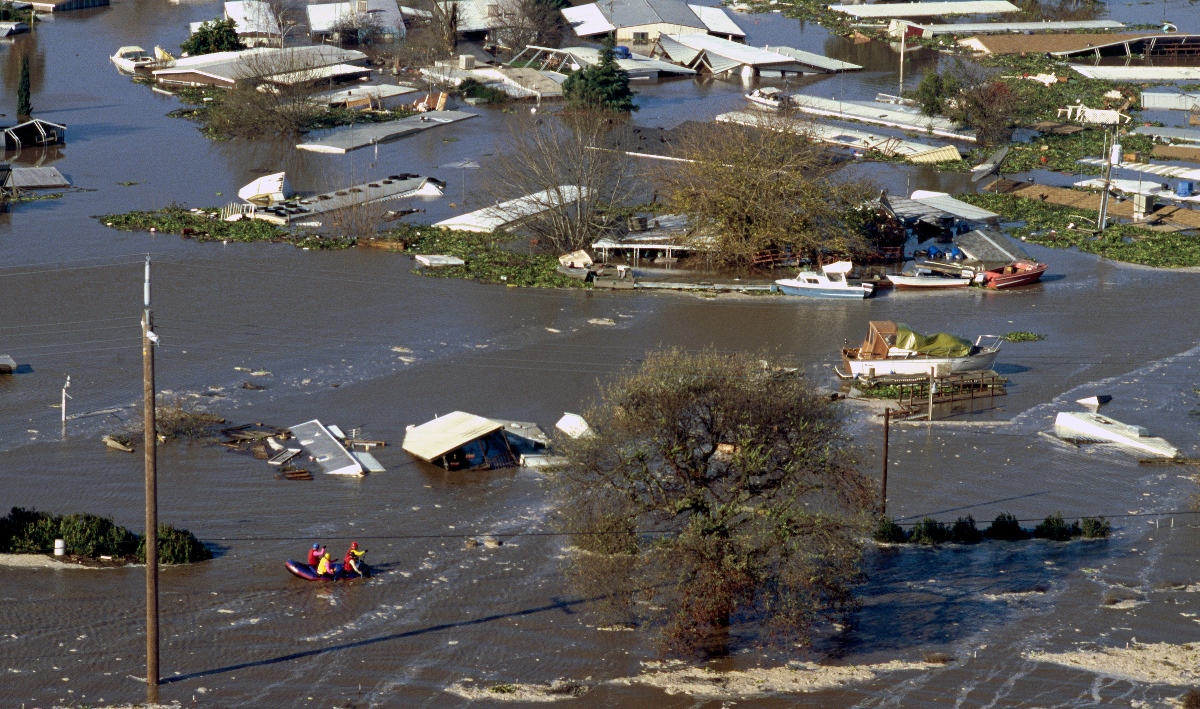Guest commentary by Gary Singh, Board Chair, San Joaquin Area Flood Control Agency (SJAFCA) in response to this guest commentary by Mayor Michael Tubbs of Stockton and former state senator Mike Machado
If we’ve learned anything from 2020, it’s that the unthinkable – a pandemic, or forest fires that reduce urban areas to ashes, as examples – can quickly become reality.
Since 1995, the San Joaquin Area Flood Control Agency (SJAFCA) has worked hard to prevent the unimaginable: a major flood like the one in 1955 that devastated Stockton’s most populated areas. Our last close call came in 1997, when flooding impacted nearly 2,000 homes and businesses, causing $80 million in damages. The following year, SJAFCA completed its Flood Protection Restoration Project, which included repairing 40 miles of existing levees, constructing 12 miles of new levees, building two major detention basins with pumps, and modifying 24 bridges. But, SJAFCA’s work was just beginning.
In 2005, the nation watched in horror as levees broke in New Orleans following Hurricane Katrina. The aftermath included stricter state and federal regulations for construction and maintenance of flood protection facilities, like levees throughout San Joaquin County. In 2007, the State enacted Senate Bill 5, mandating 200-year flood protection by 2025 for developing urban areas. It also directed the State to develop the Central Valley Flood Protection Plan, which provides a framework for flood risk reduction in the San Joaquin and Sacramento River Basins. The Plan was adopted in 2012, updated in 2017, and is on track to be updated in 2022. SJAFCA leads regional efforts to ensure the Plan accurately reflects needed projects and programs for the San Joaquin River Basin.
Meanwhile, SJAFCA is working to reduce and manage the region’s flood risk by implementing its recently adopted strategic plan. Progress is happening to build resiliency in the flood protection infrastructure, promote operational transparency, maximize state and federal investment in flood protection projects, and increase public awareness about flood risk.
In July, SJAFCA started construction of the Smith Canal Gate Project, located in Atherton Cove where it meets the Deep Water Ship Channel. Project completion in 2022 will result in the removal of high-cost federally-mandated flood insurance and onerous building restrictions for approximately 5,000 properties in the surrounding area. This relief for 30,000 of our friends and neighbors shows once again that our community, with support from the State, will take the lead to protect its residents, businesses and the environment.
Last month, representatives from the U.S. Army Corps of Engineers, Central Valley Flood Protection Board, and SJAFCA signed a Project Partnership Agreement for the Lower San Joaquin River Project. Authorized by Congress, the project includes repairs to approximately 24 miles levees, locally-led construction of the Smith Canal Gate and one other closure structure, a comprehensive flood warning system, and emergency evacuation planning. The $1.3 billion project, to be cost shared between the partners, will reduce flood risk for approximately 160,000 residents and an estimated $21 billion in property. Design for the first segment, repairs to the Delta-front levee adjacent to Brookside, is underway. Construction begins in December 2021.
SJAFCA was also recently granted an additional three years to meet the State’s 200-year flood protection requirements for Mossdale Tract with the passage of Assembly Bill 838 (Eggman and Galgiani). Mossdale Tract encompasses eastern Lathrop, western/south Manteca, Southern Stockton, and portions of unincorporated San Joaquin County. Weston Ranch, located in its northern end, was evacuated in 1997 after San Joaquin and Stanislaus River levees broke upstream. SJAFCA is working with the State to develop a levee improvement project that meets strict state and federal requirements, and that also adapts to increased water flows in the San Joaquin River that are expected as a result of climate change.
The impacts of a major flood are unthinkable. But, with SJAFCA’s singular focus on reducing and managing the region’s flood risk, we can imagine a future without flooding. By working together, we can and will reduce our flood risk, enhance our economic stability, and make our communities safer places to live, work and play.
City of Manteca Councilmember Gary Singh is Board Chair for SJAFCA, a Joint Powers Authority founded in 1995 by the City of Stockton, San Joaquin County and the San Joaquin County Flood Control and Water Conservation District. The Cities of Lathrop and Manteca joined SJAFCA in 2017. The Agency has a nine-member Board of Directors. www.sjafca.org.



